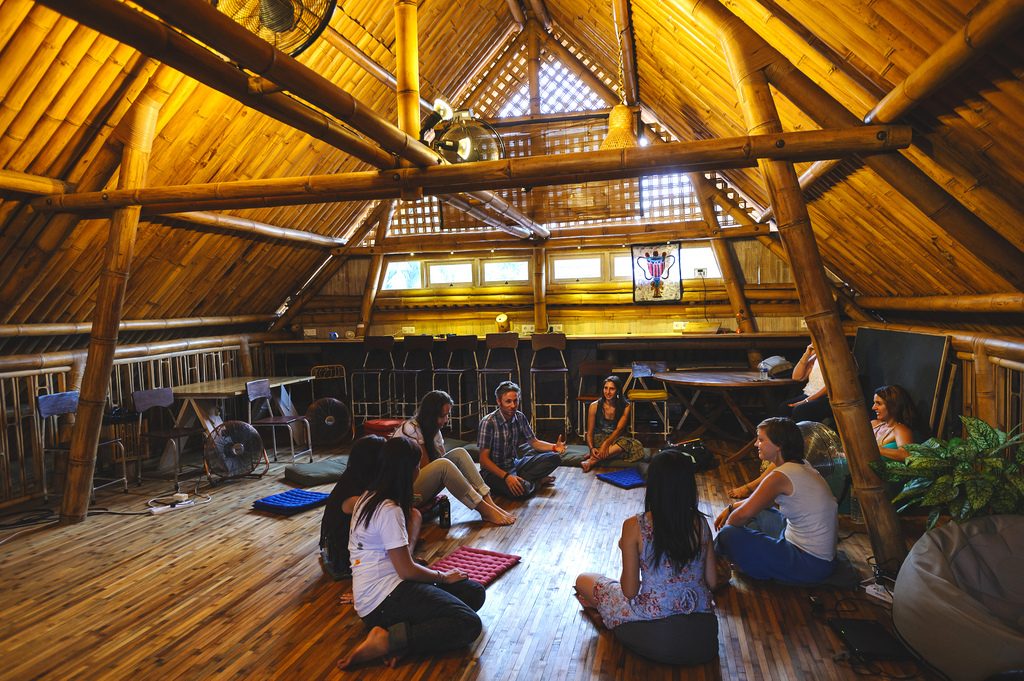They new learning system will require us move outside of the classrooms. It’s time to collaborate with leaders to solve society’s most vital challenges to build next-gen leadership acumen.
More and more higher education institutions are turning into centers of excellence. The institutions, especially those who wish to produce thought leaders & doers make a mark in the industry by working closely with problem solvers and visionaries.
The distinct fence between formal education and alternate ideologies seems to be converging and in about a few years we will start to sense the death of pure academic approach to build leadership acumen. Think tanks will propose strategies and ways forward for communities and business houses from dissolved boundaries of campuses. Not limited to low-skill report publishing or market research surveys, few institutions have already started positioning their talent as next-gen problem solvers.
Seeing the new system
Societal problems that non profits and for profit enterprises are attempting is quite an opportunity India missed while serving the export oriented service Industry. And corporations today are getting involved in addressing complex social problems like food security, inequality, environment or youth unemployment. By and large, here is next wave and multi-billion dollar opportunity. But starting to look inwards is always tough. As an approach we are a rigid bunch of people, and lost when approaching our own complex, rapidly shifting, multi-stakeholder social problems.
Over the last decade, a growing movement of practitioners have adopted a more experimental approach to addressing complex challenges. This practitioners are fair believers of talent & energy of young population. Beyond traditional thinking, centers of excellence don’t ask donors to invest in a project. They ask for intellectual investments to build an ecosystem which starts with an organic team, which then manages a portfolio of ideas. It’s talent that matters, and the process of iteration, trial and error, not a project that has little chance of success with its expiry date.
At the heart of this movement is a phenomenon we hear these days ‘Innovation Labs’ or ‘Social Innovation Labs’ or ‘Innovation Hub’. Discounting the hype, it is indeed a fresh approach that is systemic on innovating practical actions to address complex social challenges. They have three characteristics:
- Empathy: Bringing together a diverse group, including the people impacted. By contrast, a traditional approach would bring together a small group of experts, they address an audience and propose a top-down, command-and-control solution.
- Experimental: ‘Trial and error’ is somehow seeming to be the most scientific approach, irony! Failing fast is epicenter rather than investing more in what works.
- Action Oriented: This is the whole new approach. Taking a systems-based approach that addresses challenges at a root-cause level.
Just as we have scientific labs to solve scientific problems and technical labs to solve technical problems, we need social labs to solve social, political, and environmental problems. And if we build these three characteristics into our approach, our chances of success go way up.
What isn’t a Social Innovation Lab
- Many innovation labs are sprouting as you read this, hubs are being set-up. Some are heavy investments from tech giants with robots serving tea to those on screens. A true social innovation lab serves as a springboard for new ideas and innovation and thus helping the society and economy to face future challenges and meet needs of the growing population.
- An innovation lab does not call for new ideas to hold a contest. It calls those who are capable of generating them & inspires those who iterate at the grassroots.
- Lack of expertise, guidance and plan is completely normal. Presence of hierarchy, control and exclusive mindset is not!
Today, the odds of overcoming complex social challenges improve only if are willing to abandon business as usual and embrace innovative approaches, and invite diverse group of people. Imagine doctors, lawyers, farmers, engineers and govt agencies coming together to improve quality of our lives in turn building brains and shoulders of the future leaders. This happens in a social hub and our future depends on it.
Proposal: A Social Innovation Lab
In order to realize the promise of social innovation, we need a particular multi-stakeholder process that takes the most effective elements from those that already exist, but then also integrates knowledge about complex systems, system transformation, a new design of thinking.
The University of Commons invites those who wish to realize this goal. An invitation to those who are open to experiment the innovation lab in the innovation lab as a first idea. And no matter how many labs and success stories we eventually build, a new social innovation lab will put itself through the tests of the lab, each time.
It is important to note that social innovation is a journey, not an outcome. While workshops and labs can play a role, they are not a panacea. A lab of any kind signifies the coming together of a group of people in complementary roles in order to experiment with finding novel solutions. It could therefore be argued that all labs work best in the early stages of any deliberate attempt to create change.
Before we can react, we need to make sense of what we are experiencing: What is happening? Why is it happening? What does it mean? In complex systems, arriving at this understanding is best done collectively, by the people motivated and with the means to act in the face of complexity.

1 Comment
Innovation is awesome and bestest regards
Leave A Comment